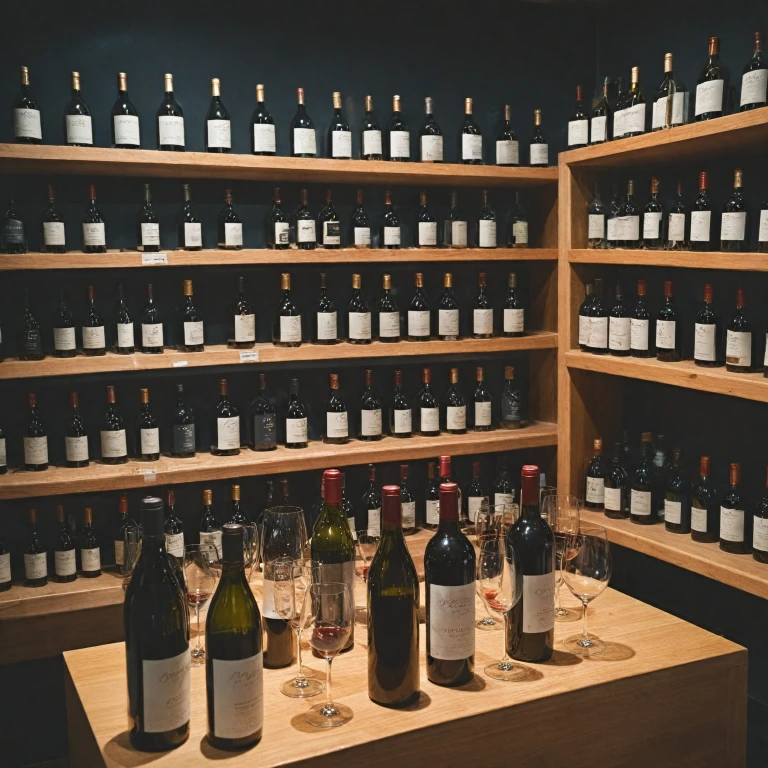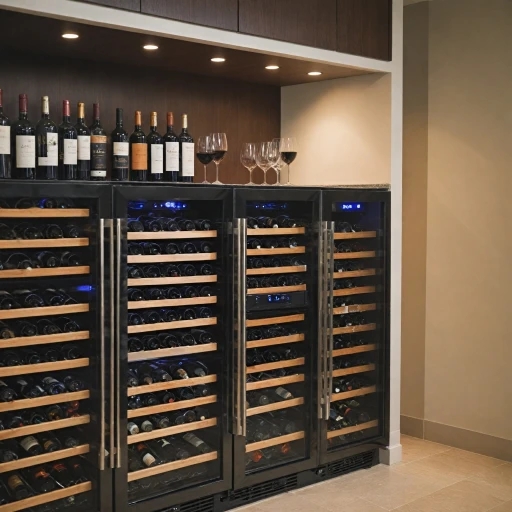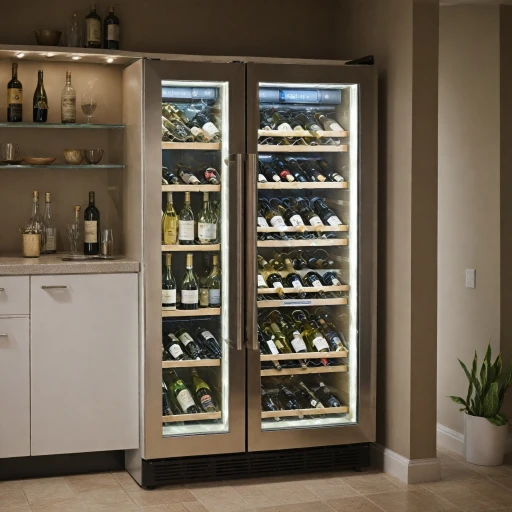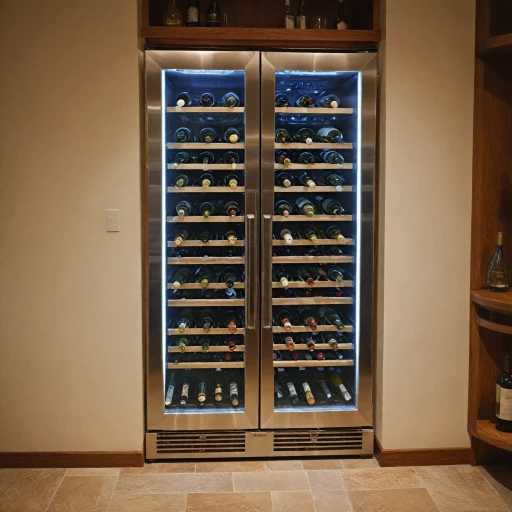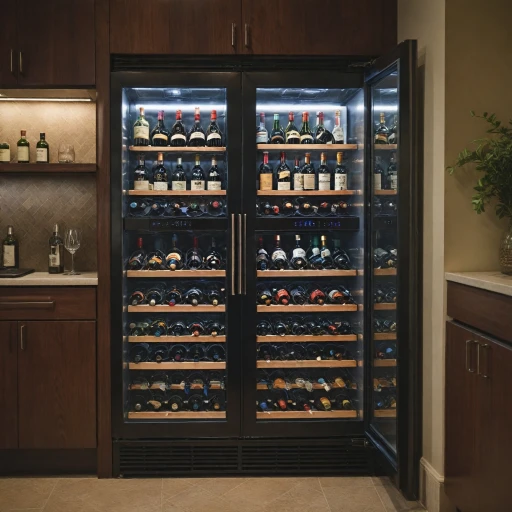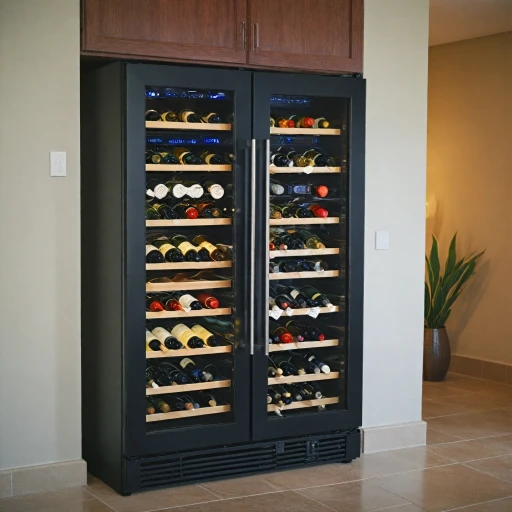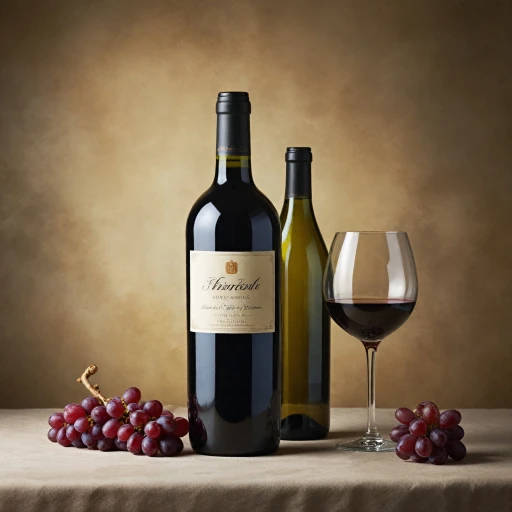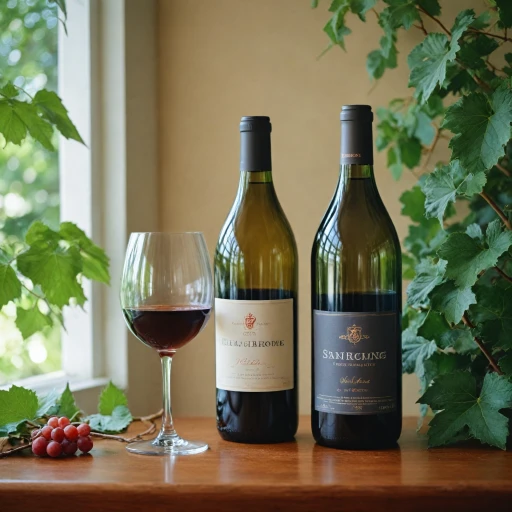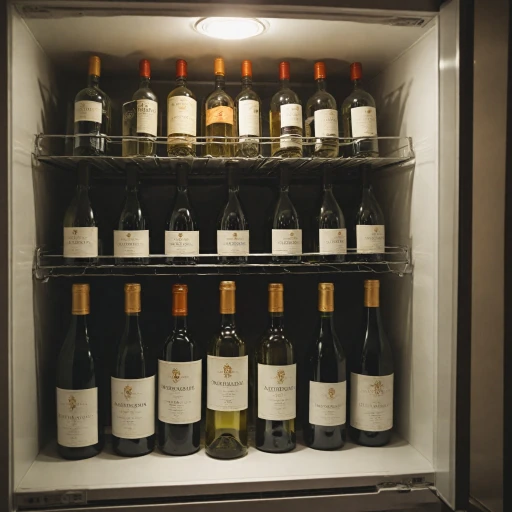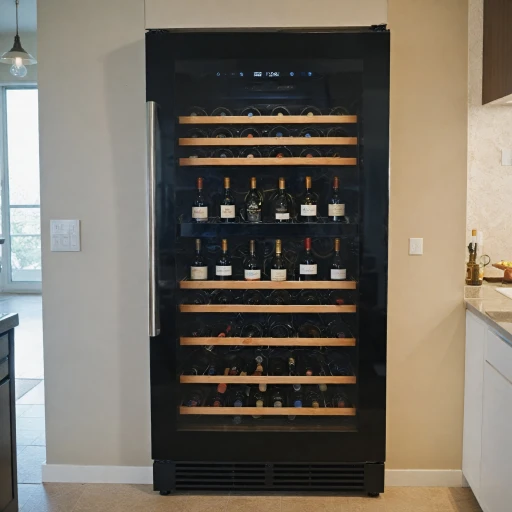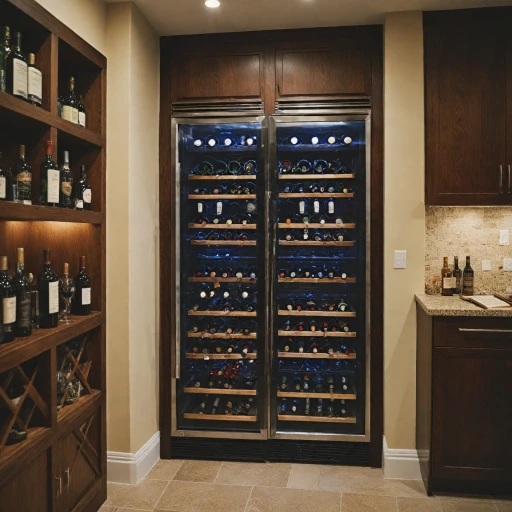
Understanding Wine Preservation Systems
Wine preservation systems play a crucial role in maintaining the quality and flavor of your cherished wines over time. The primary aim of these systems is to combat spoilage, which can occur due to several factors like oxidation, temperature fluctuations, and improper sealing. Knowing what constitutes a robust preservation system can significantly enhance your wine storage experience.
Combatting Oxidation and Spoilage
One of the primary threats to wine preservation is oxidation. When wine is exposed to oxygen, it can degrade rapidly, losing its intended bouquet and taste profile. This is where wine stoppers and preservation methods like Coravin come into play. These systems are designed to create airtight seals which prevent oxygen from entering the bottle. Many preservation systems also employ inert gases like argon gas to create a protective layer on the surface of the wine, ensuring that opened bottles of wine keep fresh for longer periods.
Preserving Sparkling Wine
When it comes to sparkling wines, maintaining the carbonation is vital. Special wine stoppers are designed for sparkling variations, maintaining the effervescence and keeping the wine tasting its best. For these types of wines, rapid consumption isn't always required, thanks to these innovative wine stoppers that allow for extended storage without compromise on quality.
Temperature Regulation
Another critical aspect of wine preservation systems is temperature control. Wines need specific temperature settings to preserve their organoleptic properties effectively. White wines, for example, require cooler storage options which can be optimized for preservation in specifically designed wine refrigerators. Ensuring optimal temperature settings for different wine types can help in extending the longevity and quality of your wine.
By understanding and employing the right wine preservation systems, you can enjoy your wine bottles to their fullest potential, savoring every drop with the freshness and character intended by the producer.
Types of Wine Preservation Systems
Recognizing Different Variants of Wine Safekeeping Systems
The market offers a diverse array of wine preservation systems, each designed to meet unique needs and preferences. Understanding these variations can help you determine which system best suits your wine collection.- Vacuum-based Systems: These systems, like Vacu Vin, use a pump to remove air from the wine bottle, minimizing oxygen exposure. An accompanying wine stopper seals the bottle tightly, helping to preserve wine flavor for several days.
- Argon Gas Systems: Popular in both home and professional settings, these systems utilize argon gas to create a protective layer over the wine. Brands like Coravin allow you to pour wine without removing the cork, keeping the rest of the bottle wine intact for months.
- Wine Stoppers and Re-pour: Often simpler and less expensive, wine stoppers provide a basic level of preservation. Re-pour wine stoppers, for instance, absorb oxygen within bottles, extending freshness for additional days.
- Innovative Sparkling Wine Systems: Preserving sparkling wines requires specialized tools due to their carbonation. Sparkling wine stoppers are designed specifically for this purpose, maintaining bubbles and freshness.
- Private Preserve: This is a versatile system utilizing a blend of inert gases to keep wine fresh by displacing oxygen. It is suitable for red, white, and sparkling wines, making it a flexible choice for diverse collections.
- Temperature-controlled Wine Coolers: Optimal temperature is crucial for proper wine storage. While these are primarily storage solutions, they indirectly contribute to wine preservation by ensuring a stable environment for your wines. For insights on temperature settings for white wines, visit our optimal temperature settings guide.
The Role of Temperature in Wine Preservation
Temperature Management: The Delicate Balance
Temperature plays a crucial role in wine preservation, making it an essential factor for any wine preservation system. Maintaining an optimal temperature is key to preserving the intricate flavors and aromas of wine, whether it's a robust red or a delicate white. The importance of temperature cannot be overstated, as fluctuations can quickly lead to spoilage.
When it comes to storing wines, particularly those that you plan to age, a consistent temperature is vital. Ideally, wine should be stored at a temperature ranging between 45°F to 65°F. For wines that you plan to consume soon, such as sparkling wines or whites, slightly cooler temperatures can help maintain their freshness and vibrancy.
Diverse wine preservation systems offer various temperature management solutions:
- Wine Fridges: These are specifically designed to keep wine at the ideal temperature and humidity. Different zones allow for the storage of both reds and whites in the same unit.
- Wine Cellars: For those with more space, wine cellars provide a natural environment with stable temperature and humidity levels.
- Smart Systems: Innovations in technology have led to smart systems that provide real-time temperature and humidity monitoring, ensuring optimal storage conditions at all times.
Utilizing the right wine preservation system ensures that your opened or unopened wine bottles remain at their best, enhancing the overall wine drinking experience. Moreover, it helps in maintaining the quality of wine, allowing one to preserve wine for more extended periods without compromising on taste.
Be it the classic cork, advanced Coravin systems, or stoppers like Repour or Vacu Vin, ensuring your wine is kept at the right temperature should always be a top consideration. Implementing these practices will keep wine fresh for days, allowing you to savor every drop from your favorite wine bottle.
Humidity and Its Impact on Wine Storage
Influence of Humidity on Wine Longevity
When it comes to maintaining the intricate flavors and aromas of wine, humidity is an often underestimated factor. Understanding its role can significantly enhance your wine preservation efforts. The regulation of humidity levels is essential in any wine preservation system. A well-balanced humidity level helps to maintain the integrity of the cork, a crucial component in minimizing oxygen exposure which can prematurely age the wine. If the surrounding air becomes too dry, corks can shrink, allowing oxygen to infiltrate and spoil the wine. Conversely, excessively high humidity levels can lead to mold growth on the bottle, labels, or even the cork. For premium preservation systems like those utilizing a coravin, maintaining optimal humidity ensures the device functions as intended, keeping the wine fresh and vibrant over more days. Devices and wine stoppers such as vacu vin or the repour wine stopper thrive under controlled humidity, as they work to create a vacuum that fights oxygen intrusion. Sparkling wines, given their effervescence, rely even more on stable humidity to keep their lively bubbles intact. Wine storage solutions, including wine preserver products such as private preserve, often incorporate guidance on monitoring humidity. Pairing these with a robust system that keeps a stable environment, whether for bottle wine, or individual wine bottles in a collection, can significantly enhance wine longevity. Humidity isn't solely about keeping wines fresh for a few extra days, it's about preserving the investment you've made into each bottle, ensuring that each time you open a bottle, it showcases its best potential. Whether it’s a sparkling or white wine, maintaining optimal storage conditions with the right balance of temperature and humidity is crucial to preserving the pristine taste of both still and sparkling varieties.Innovations in Wine Preservation Technology
Revolutionary Technologies Shaping Wine Longevity
As the realm of wine preservation continues to evolve, cutting-edge innovations are transforming how we preserve wine. These advancements bolster the integrity of wine, ensuring each bottle remains as fresh and flavorful as the day it was opened. Here are some of the notable technological strides in this domain:
- Coravin System: A game-changer in wine preservation, the Coravin system allows wine enthusiasts to pour and enjoy wine without removing the cork. By utilizing a thin needle to pierce the cork and inject argon gas, this system enables the wine to flow out while preventing oxygen from spoiling the rest of the bottle. This means that both the cork and the remaining wine stay untouched by air, maintaining the bottle's pristine condition.
- Advanced Glass Stopper Systems: For wine bottles, modern glass stoppers are becoming more popular alternatives to traditional corks. These can enhance wine preservation, particularly for sparkling wines, by keeping the wine fresh and maintaining carbonation longer than conventional methods.
- Repour Wine Stoppers: A handy innovation for those who frequently have partially consumed bottles. The Repour stopper absorbs oxygen within the bottle, thus reducing the gas’s effect on the wine. This aids in extending the freshness of the wine for days or even weeks.
- Private Preserve Gas Systems: For those seeking a straightforward, efficient method to maintain wine freshness, Private Preserve employs a mix of argon, carbon dioxide, and nitrogen gases. These gases work harmoniously to form a protective barrier on the wine's surface, significantly slowing down oxidation.
- Vacu Vin Wine Stoppers: This easy-to-use system involves a wine stopper and a vacuum pump that removes air from the bottle, decreasing the rate of wine spoilage. Though best for short-term preservation, it’s an affordable option to keep wine fresh for a few extra days.
With these technological advancements, selecting the best wine preservation systems becomes a more nuanced process. Factors like wine type, frequency of use, and personal preferences should guide your choice, ensuring that each bottle, whether white or sparkling wines, remains at its optimal state.
Choosing the Right Wine Preservation System
Selecting Your Ideal Wine Preservation Companion
Choosing a wine preservation system requires careful consideration of various factors, depending on your specific needs. From preventing your most cherished bottles from oxidizing to preserving sparkling wines, each system offers unique advantages.
Firstly, understanding the nuances of how a preservation system works aids in making an informed choice. Systems like Coravin employ a needle to access wine without removing the cork, using argon gas to keep wine fresh for weeks. This is ideal for luxury wines you savor over multiple sittings without compromising quality or waste.
If you seek a budget-friendly yet effective method, consider vacu vin systems, which function by removing oxygen from the bottle. For increased efficiency, coupling with wine stoppers designed to fit tightly can extend the life of your bottle wine.
Sparkling wines and champagne lovers will appreciate solutions designed explicitly for effervescent bottles. Systems like special wine stoppers maintain bubbles, crucial for keeping sparkling wines vibrant over days.
Consider the private preserve, a gas preservation system releasing inert gas into the bottle, forming a protective layer over the wine. With its ability to preserve wine without changing flavor profiles, it's favored by those preserving both red and delicate white wines.
For occasional drinkers, the repour wine preserver, involving single-use oxygen absorbers, could suffice. It's designed to handle open wine bottles without requiring complex mechanisms.
Finally, reflect on your typical consumption patterns. Whether enjoying a glass of wine alone or hosting friends for dinner parties, a balance between efficiency and cost will guide you to the best wine preservation system that suits your lifestyle.
